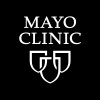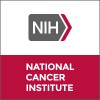
A Study to Evaluate the Efficacy, Safety and Immunogenicity of Leucostim® Versus Neupogen® in Breast...
Breast CancerA study to compare the efficacy, safety and immunogenicity of Leucostim® to those of Neupogen® in patients with breast cancer intended to be treated with TAC regimen as a myelosuppressive chemotherapy.

Nanogen Pegcyte Clinical Study for the Prevention of CIN in Breast-cancer Patients.
Breast Cancer FemaleAccelerated AC regimen-Doxorubicin 60 mg/m2,Cyclophosphamide 600 mg/m2 on day 1 & day 14 of each cycle along with G-CSF support for up to 4 cycles, followed by Paclitaxel 175 mg/m2 in the next 4 cycles is the standard clinical practice in Vietnam for breast cancer, this regimen is to facilitate the dose-dense schedule, patients receive every-2-week therapy along with G-CSF support. the accelerated dose-dense schedule improve disease-free and overall survival among women with breast cancer .Primary objective of this study is to compare the efficacy and safety of Nanogen's Pegcyte and Roche's Neulastim for prevention of chemotherapy (Accelerated AC regimen)-induced neutropenia on breast cancer patients. Breast cancer patients scheduled to receive myelosuppressive chemotherapy (AC regimen) will be recruited in this trial. All eligible patients receive single subcutaneous injection of study drugs 24 hours after chemotherapy administration in each cycle for 3 consecutive cycles. Efficacy and safety assessments will be assessed based on the incidence of severe neutropenia in combination of temperature > 38.3℃ or sepsis or life threatening infection and incidence of serious adverse events.

BrUOG 351: PRE-OPERATIVE APBI USING NIBB
Breast CancerInvasive Breast Cancer1 morePartial breast irradiation is typically performed after surgical removal of the tumor. Partial breast irradiation allows for focused radiation to the area from which the cancer was removed, sparing breast tissue from the potential bad effects of radiation compared to radiating the whole breast, which was the standard of care for many years. This study is evaluating the use of partial breast irradiation with NIBB performed before surgery instead of after surgery.This should allow researchers to target the cancer even more accurately and result in less normal breast tissue receiving radiation which may cause less side effects and/or a better cosmetic outcome. In this study partial breast treatment will be given with NIBB in 5 treatments over about 1 week. Surgical removal of the tumor will then be performed between 4-12 weeks following radiation treatment. Researchers believe that participant's risk of complications from surgery will not be higher after getting these radiation treatments than it would have been if participants had surgery first, but that is one of the things researchers are studying.

Fingolimod in Preventing Paclitaxel-Associated Neuropathy in Patients With Breast Cancer
Breast CarcinomaThis trial phase I studies how well fingolimod works in preventing chemotherapy-induced nerve pain (neuropathy) in patients with breast cancer who are taking paclitaxel. Fingolimod acts by suppressing immune reactions in the brain. This study is being done to see if fingolimod can reduce neuropathy caused by paclitaxel.

A Study of a New Drug Combination, Copanlisib and Fulvestrant, in Advanced Breast Cancer
Anatomic Stage IV Breast Cancer AJCC v8Metastatic Breast Carcinoma2 moreThis phase I/II trial studies the side effects and how well copanlisib works when given together with fulvestrant in treating patients with estrogen receptor positive (ER+) and human epidermal growth factor receptor 2 negative (HER2-) breast cancer that has spread to other places in the body (advanced) and progressing after prior treatment. HER2 and ER are two types of proteins called receptors that can affect the growth of breast cancer cells. Additionally, investigators hope to learn from this study if tumor genetic information is important for predicting whether this type of breast cancer will respond to fulvestrant and copanlisib. Copanlisib may stop the growth of tumor cells by blocking some of the enzymes needed for cell growth. Hormone therapy using fulvestrant may fight breast cancer by blocking the use of estrogen by the tumor cells. Giving copanlisib and fulvestrant may work better in treating patients with ER+ and HER2- breast cancer compared to fulvestrant alone.

FES (16α-[18F]-Fluoro-17β-estradiol)-PET: Towards a New Standard to Stage Locally Advanced and Recurrent,...
Breast CancerAccurate staging is of great importance in patients with clinically locally advanced primary breast cancer (LABC, stage III) or locoregional recurrent (LRR) breast cancer for making a correct treatment plan. According to current guidelines, staging is performed with positron emission tomography (PET) using the 2-[18F]fluoro-2-deoxy-D-glucose ([18F]FDG) PET tracer, combined with diagnostic computed tomography (CT). However, previous studies have shown that this technique (with the current PET tracer) might not be sufficient for accurate staging. Specifically in low grade, estrogen receptor positive (ER+) breast cancer metastases can be missed due to the low metabolic activity, leading to low uptake of [18F]FDG. Therefore, there is a clinical need to improve staging procedures. 16α-[18F]-fluoro-17β-estradiol ([18F]FES), an ER-targeted PET tracer, allows imaging of ER+ tumor lesions regardless of their metabolic activity. Patients with clinically LABC and LRR have a 25-50% risk of distant metastases. Correct identification of distant metastases allows adaptation of the treatment plan to avoid burdensome treatment with surgery, systemic and radiotherapy in order to maintain quality of life. In case of oligometastases, correct identification increases the likelihood for cure with local treatment. In the current study we will compare disease staging with [18F]FES- and [18F]FDG PET in patients with clinically LABC/LRR breast cancer. Objective: To determine whether [18F]FES PET/CT improves staging for women with clinically LABC or LRR, ER+/HER2- breast cancer as compared to standard [18F]FDG PET/CT. Study design: Multicenter prospective study with invasive measurements. Study population: 20 LABC and 20 LRR ER+/HER2- breast cancer patients. Main study parameters/endpoints: To determine the percentage of patients with a correctly changed treatment plan according to information obtained from [18F]FES PET/CT compared to [18F]FDG PET/CT at staging and at 6 months of follow-up; to determine the percentage of metastatic lesions detected and missed with [18F]FES PET/CT compared to [18F]FDG PET/CT (at staging and during follow-up). Nature and extent of the burden and risks associated with participation, benefit and group relatedness: Patients will receive an intravenous cannula for tracer injection and blood sampling, causing potentially transient discomfort at the site of the cannula insertion. Tumor biopsy will be performed from an easy accessible lesion and the most frequent complications that can occur are discomfort, bleeding and (local) infection. The risk of complications from a tumor biopsy is considered low: 0.24-1.6% and 0.11-0.48% for major complications and mortality, respectively. Radiation exposure from a [18F]FES PET and [18F]FDG PET scan usually ranges between 4-11 mSv and 7-8 mSv, respectively. Radiation exposure from a diagnostic CT scan ranges between 8-14 mSv. The total radiation burden is considered justifiable when compared to the information that can be obtained from this study, in this patient group with breast cancer. Imaging with [18F]FES PET may improve staging for patients with breast cancer as it may show tumor lesions that could not be identified with [18F]FDG PET, the current standard for staging. If this is the case, the initial treatment goal and intensity can be adjusted which can have beneficial effects for the patient.

ENGAGED 2 Study: Experiences With Mammography Screening and Breast Density 2
Breast DensityBreast Cancer FemaleThis trial will test a decision support web based intervention for women at increased risk for breast cancer due to breast density and other risk factors (age, race/ethnicity, family history of breast cancer, history of prior breast biopsies), and to consider MRI and/or chemoprevention to manage their breast cancer risk.

Doxorubicin-associated Cardiac Remodeling Followed by CMR in Breast Cancer Patients
Breast Cancer FemaleDoxorubicin Induced CardiomyopathyTwenty-seven breast cancer women without heart failure, underwent CMR imaging (3T-Achieva, Philips) before and 3 times serially after 4-cycles of adjuvant DOX (60mg/m2). CMR assessed left ventricular (LV) ejection fraction (EF), T1 mapping pre and post gadolinium and late gadolinium enhancement imaging. Biomarkers were obtained before and 72 hours after each DOX-cycle.

Improving Surgical/Medical Oncology Collaboration for Breast Cancer Treatment Planning: Pilot Testing...
Breast CancerThis study will explore provider's screening and management practices for eligibility for neoadjuvant therapy from baseline to following the project intervention (use of a novel existing technology, the Carevive Care Planning System at the point of care plus provider continuing medical education.

Bexarotene in Preventing Breast Cancer in Patients at High Risk for Breast Cancer
Breast Atypical Ductal HyperplasiaBreast Atypical Lobular Hyperplasia3 moreThis phase I trial studies the side effects and best dose of bexarotene in preventing breast cancer in patients at high risk for breast cancer. Bexarotene belongs to a class of drugs that are called rexinoids, and it may reduce the incidence of breast tumors.
